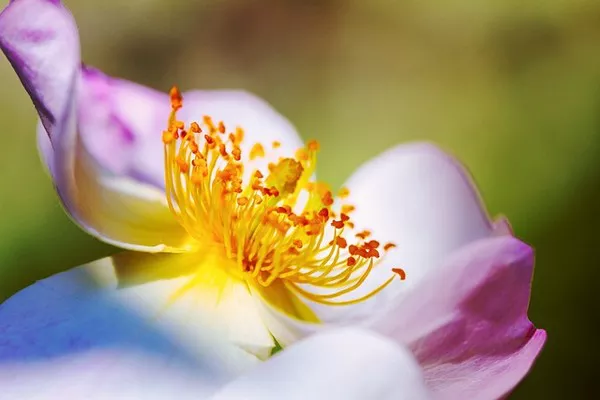Flowers, with their vibrant colors, delicate petals, and captivating fragrances, have long held a special place in human culture and the natural world. As diverse as the ecosystems they inhabit, flowers come in a plethora of shapes and sizes, each with its unique characteristics. In this article, we delve into the enchanting realm of flowers, exploring some of the most common and widely recognized species that grace gardens, parks, and landscapes around the world.
Rose (Rosa spp.):
Undoubtedly one of the most iconic and cherished flowers, the rose is celebrated for its timeless beauty and symbolic significance. With thousands of varieties in various colors, shapes, and sizes, roses have been cultivated for centuries, symbolizing love, passion, and elegance. From classic red roses to fragrant hybrid tea roses, this diverse genus continues to be a favorite in gardens and floral arrangements globally.
Tulip (Tulipa spp.):
Originating from Central Asia, tulips have captured the hearts of garden enthusiasts worldwide. Known for their distinctive cup-shaped blooms and vibrant hues, tulips are often associated with spring and renewal. The Tulip Festival in the Netherlands, showcasing millions of blooming tulips, attracts visitors from across the globe. These charming flowers come in an array of colors, including red, yellow, pink, and white, adding a burst of color to gardens in early spring.
Sunflower (Helianthus annuus):
Standing tall and proud, the sunflower is a symbol of warmth and positivity. With its large, golden-yellow petals and a dark central disk, the sunflower follows the sun throughout the day, earning it the name “sunflower.” Native to North America, sunflowers have become a global favorite, adorning gardens and fields and providing seeds that are both nutritious and delicious.
Lily (Lilium spp.):
Renowned for their graceful and elegant appearance, lilies are a diverse genus with numerous species and hybrids. From the iconic white Madonna Lily to the vibrant and fragrant Stargazer Lily, these flowers are known for their trumpet-shaped blooms and long, slender stems. Lilies are often associated with purity and are commonly featured in bouquets and floral arrangements.
Daisy (Bellis perennis):
Simple yet charming, the daisy is a symbol of innocence and purity. With its white petals surrounding a yellow central disk, this flower is a classic representation of simplicity and beauty. Daisies are found in a variety of environments, from meadows to gardens, and they are known for their resilience and ability to thrive in diverse conditions.
Orchid (Orchidaceae):
With an astonishing array of shapes, sizes, and colors, orchids are a diverse and captivating family of flowers. Boasting over 25,000 species, orchids are found on every continent except Antarctica. Renowned for their intricate designs and unique structures, orchids have captured the fascination of botanists and orchid enthusiasts alike. From the elegant Phalaenopsis to the exotic Cattleya, orchids continue to be highly sought after in the world of horticulture.
Carnation (Dianthus caryophyllus):
Known for their ruffled petals and spicy fragrance, carnations are a popular choice for bouquets and floral arrangements. Available in a wide range of colors, including pink, red, white, and yellow, carnations are often associated with love and admiration. These durable flowers have a long vase life, making them a favorite for both casual and formal occasions.
Geranium (Pelargonium spp.):
Geraniums, often mistaken for pelargoniums, are a diverse group of flowering plants known for their distinctive five-petaled blooms and aromatic foliage. These hardy plants are commonly used as bedding plants and are appreciated for their ability to thrive in various conditions. With colors ranging from vibrant reds to soft pinks and whites, geraniums add a splash of color to gardens and containers.
Marigold (Tagetes spp.):
Marigolds, with their cheerful and vibrant blooms, are popular annual flowers that brighten gardens and landscapes. Known for their pest-repelling properties, marigolds are not only aesthetically pleasing but also serve practical purposes in horticulture. Their warm colors, including orange and yellow, make them a staple in fall gardens and seasonal displays.
Chrysanthemum (Chrysanthemum spp.):
Symbolizing autumn and often associated with festivities like Thanksgiving, chrysanthemums are versatile flowers with a rich cultural history. With a wide range of colors, shapes, and sizes, chrysanthemums are a favorite for fall gardens and floral arrangements. These resilient flowers thrive in cooler temperatures, providing a burst of color as other plants begin to fade.
See Also: What Flowers Are Good For Bees?A Closer Look
Conclusion:
In the vast tapestry of the natural world, flowers stand out as exquisite expressions of beauty and diversity. The flowers mentioned in this article represent just a fraction of the myriad species that grace our gardens and landscapes. Each flower, with its unique characteristics and cultural significance, adds to the rich tapestry of the botanical world. Whether admired for their aesthetic appeal, fragrance, or symbolic meaning, these common flowers continue to enchant and inspire nature lovers around the globe.


